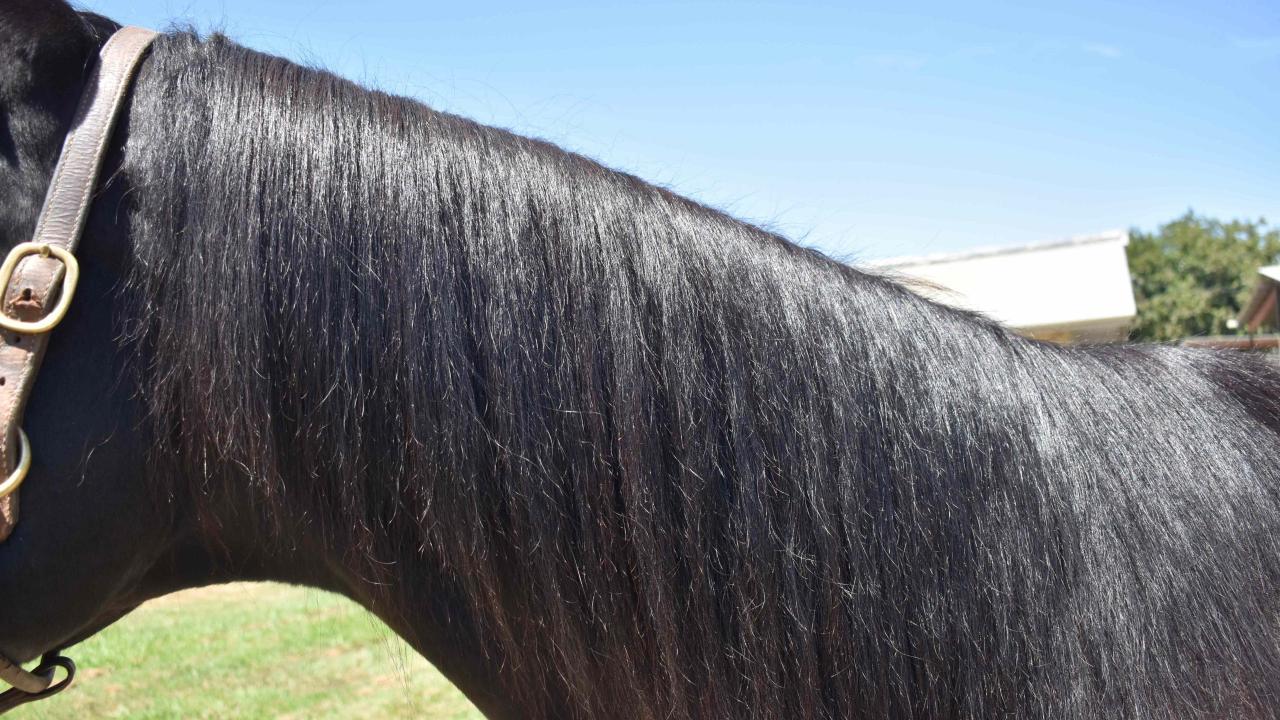
UC Davis Study Reports Successful Use of Hair Samples for Detection of Bisphosphonates in Horses
UC Davis School of Veterinary Medicine researchers recently reported on the successful long-term detection of bisphosphonates in equine hair samples. The study, led by Dr. Heather Knych of the K.L. Maddy Equine Analytical Chemistry Lab's Pharmacology section and the Department of Molecular Biosciences, has beneficial implications for racehorse health and welfare. It was supported by a special call for bisphosphonate research from the Grayson Jockey Club Foundation.
Bisphosphonates are molecules that strongly bind to bone material and prevent bone resorption and natural remodeling. Two bisphosphonates are approved for use in horses that are four-years-of-age and older, clodronate disodium (Osphos) and tiludronate disodium (Tildren). They are safe and effective at relieving pain and lameness in horses with navicular syndrome.
However, off-label use to treat other equine bone conditions, especially in young horses, has raised concerns since they can have long-term effects on bone and weakened bones can put horses at risk for catastrophic injuries. The Horseracing Integrity and Safety Authority's Anti-Doping and Medication Control program has categorized bisphosphonates as banned substances. Horses that test positive under the program are subject to lifetime racing ineligibility.
Previous studies by Dr. Knych’s group reported that bisphosphonates can be detected in equine bone, blood, and urine for extended periods. However, their results also showed that detection in blood and urine can be inconsistent. Compounds can generally be detected for much longer periods in hair than in blood or urine. As such, mane and tail hair samples can provide long-term historical records of drug exposures.
“From our previous research, we know that bisphosphonates remain in equine bone over long periods,” said Knych. “Hair sampling is non-invasive and has proven to be a reliable and reproducible matrix for equine drug testing. The ability to detect bisphosphonates long term in hair samples would benefit horse welfare and the integrity of the sport.”
The current study developed an assay and evaluated the use of hair for long-term detection of clodronate administration. Results indicated that the drug was detectable in hair for up to six months in most of the horses studied. Further research is needed to better understand how long it takes clodronate to be incorporated into hair, as well as implications for widespread use of this testing method.
“Hair testing has become an increasingly important anti-doping matrix in horse racing, but not all prohibited substances are amenable to hair testing,” said Dr. Rick Arthur, former Equine Medical Director and a co-author on the study. “Regulators are keen to expand their understanding of which drugs of interest can be detected in hair and under what conditions. This study is an example of that effort. Anti-doping in horse racing not only addresses performance enhancing or other performance modifying substances, but horse health and welfare substances as well. Bisphosphonate misuse has been a major concern for horse safety and now hair testing offers an alternative matrix to blood and urine.”
# # #
The Kenneth L. Maddy Laboratory is a unit of the UC Davis School of Veterinary Medicine. The laboratory provides a drug-testing program with the highest quality standards, employing the most innovative methodology and newest analytical technology, in order to ensure the integrity of horse racing. It also expands and disseminates new information regarding therapeutic medications in order to improve the welfare of California performance horses. In addition to performing drug testing on samples submitted from California's racetracks, the laboratory accepts submissions from other private and institutional clients.
